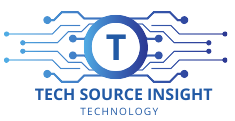The Evolving Tech Landscape
Technology is advancing at an unprecedented pace, seamlessly weaving into every aspect of our daily lives. Devices are smarter, software is more intuitive, and connectivity has reached staggering heights. By 2025, these changes will have reshaped how we interact with the world, opening up opportunities to explore hidden tips and tricks that enhance functionality, usability, and security. Hidden features in our favorite gadgets or software tools can often go unnoticed, yet they hold the potential to significantly optimize our tech experiences.
This article dives into the lesser-known tech tricks that can unlock the full potential of your gadgets and software, helping you stay ahead in the rapidly evolving digital landscape.
Enhancing Smartphone Capabilities
Your smartphone is a far more powerful tool than you may realize. While most of us focus on the basics—texting, calling, and scrolling through social apps—our devices are packed with features that often go underutilized. Take camera settings, for instance. Beyond the automatic mode, you can explore features like manual focus, shutter speed control, and RAW photo formats, all of which give you near-DSLR-level photography capabilities. Gesture controls have also evolved, reducing the need for constant screen tapping. Features like custom shortcuts, voice commands, and facial gestures can simplify navigation and save time.
Additionally, the accessibility options on smartphones—like voice-to-text, magnifiers, and custom vibration patterns—aren’t just for those with disabilities. They can enhance productivity and tailor your device to better suit your daily needs.
Maximizing Productivity with Software Tools
Popular software tools hold many hidden gems that are often overlooked. Take Microsoft Office for example. Did you know you can embed real-time Excel data in a PowerPoint presentation or use advanced AI tools like “Ideas” in Excel to analyze data in seconds? Similarly, Google Workspace offers features like Smart Compose in Gmail, which can predict and autofill your sentences to save time, or Explore in Google Docs, which boosts research and creative brainstorming.
For project management tools like Trello or Asana, keyboard shortcuts and rule-based automation can cut time spent on manual updates. Imagine setting a card to automatically move to a “Completed” section in Trello once every checkbox has been ticked—small tweaks like these reduce administrative load and improve efficiency.
Optimizing Smart Home Devices
The concept of the smart home is no longer futuristic—it’s here, and it’s smarter than you think. By leveraging advanced settings and device integrations, you can create a living environment that’s both efficient and enjoyable. For example, instead of manually managing your smart lights, explore advanced scheduling based on sunrise and sunset data.
Integration options are also expanding. Did you know you can connect multiple devices, like smart thermostats and speakers, using a single platform like Google Home or Alexa? This allows you to set up routines like “Good Morning,” where your lights slowly brighten, curtains open, and coffee starts brewing automatically. The potential of smart home devices goes far beyond basic commands—it’s about creating a seamless, personalized ecosystem.
Leveraging Cloud Services Effectively
Cloud services are ubiquitous in 2025, powering everything from collaborative projects to personal backups. However, many users fail to take full advantage of these platforms. For instance, Google Drive and Dropbox are not just for storage. They offer tools for file versioning (to retrieve earlier versions of a document), offline editing on synced devices, and advanced sharing controls for better collaboration.
Additionally, cloud platforms like OneDrive can free up substantial device space through on-demand file storage. Instead of keeping all files on your computer, you can only download what you need, when you need it. For professionals, features like real-time collaboration and automatic file organization in productivity suites further amplify teamwork and streamline workflow.
Securing Your Digital Life
Cyber threats are constantly evolving, and staying secure online is more important than ever. While most people know about standard practices like using antivirus software, there are more advanced tactics to explore. VPNs, for example, don’t just protect your browsing; they can also unlock region-specific content on streaming platforms. Password managers, meanwhile, ensure that you don’t repeat passwords or rely on weak ones while also storing credentials securely.
For browsing, consider using secure search engines like DuckDuckGo or extensions like HTTPS Everywhere, which forces your connection to remain encrypted. Greater awareness of built-in device privacy settings can also go a long way. For instance, reviewing and managing app permissions regularly ensures you’re not sharing more data than necessary.
Adoption Rates of New Tech Features (2023-2025)
To illustrate the increasing adoption of these technologies, here’s a chart showcasing the usage rates of key tech features projected for 2023 to 2025:
|
Feature |
2023 Adoption Rate |
2024 Adoption Rate |
2025 Adoption Rate |
|---|---|---|---|
|
Advanced Smartphone Camera Use |
40% |
55% |
70% |
|
Cloud Collaboration Tools |
55% |
70% |
85% |
|
Smart Home Device Integration |
30% |
50% |
65% |
|
Password Manager Utilization |
25% |
40% |
60% |
|
AI-powered Productivity Features |
35% |
50% |
75% |
These trends highlight an important reality—adopting these features now places you ahead of the curve and ensures you’re ready for the next wave of tech advancements.
Exploring Cutting-Edge Technologies
Emerging technologies like AI, VR/AR, and blockchain are poised to become mainstream by 2025. AI-driven tools are revolutionizing industries, enabling everything from predictive analytics to natural language generation. For instance, AI tools like Jasper can assist in automating content creation or generating insightful analytics reports.
Meanwhile, VR/AR is transforming entertainment and education. From virtual museums to AR-guided training modules, these technologies are breaking the boundaries of physical spaces. Blockchain solutions are also making waves, offering decentralized and tamper-proof systems for transactions, supply chains, and beyond.
Troubleshooting Common Tech Issues
Even as technology advances, common tech annoyances persist. Does your internet speed drop unexpectedly? Start by running speed tests and clearing your cache, or use DNS changers to access less-congested traffic routes. Experiencing software glitches? Restarting or reinstalling applications often resolves the issue, though keeping device drivers updated is essential for long-term smooth operations.
For hardware malfunctions, pay attention to warning signs. For example, a noisy fan or unexpected shutdown could indicate overheating, which cleaning or upgrading your cooling system can address. Tackling these tech setbacks efficiently ensures your devices run smoothly for years to come.
Staying Ahead in the Tech World
Navigating the tech landscape of 2025 doesn’t have to feel overwhelming. Armed with these hidden tips and tricks, you can unlock new levels of productivity, security, and convenience in your personal and professional lives. The key is to stay curious and continually explore the capabilities of the tools and devices you’re already using.
Remember, the tech world moves fast—so why not sign up for newsletters, follow trusted tech advisors, and make a habit of exploring new features? This way, you’ll always be ahead of the curve, adapting effortlessly to the next wave of innovation.




